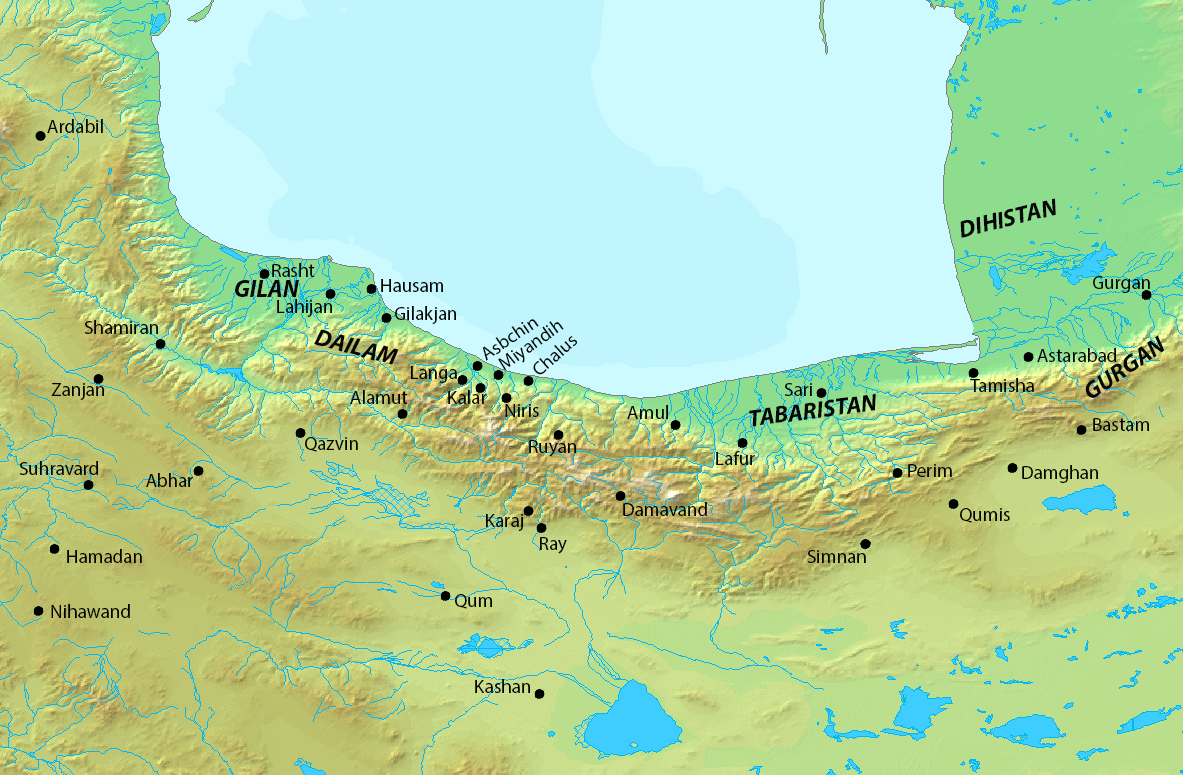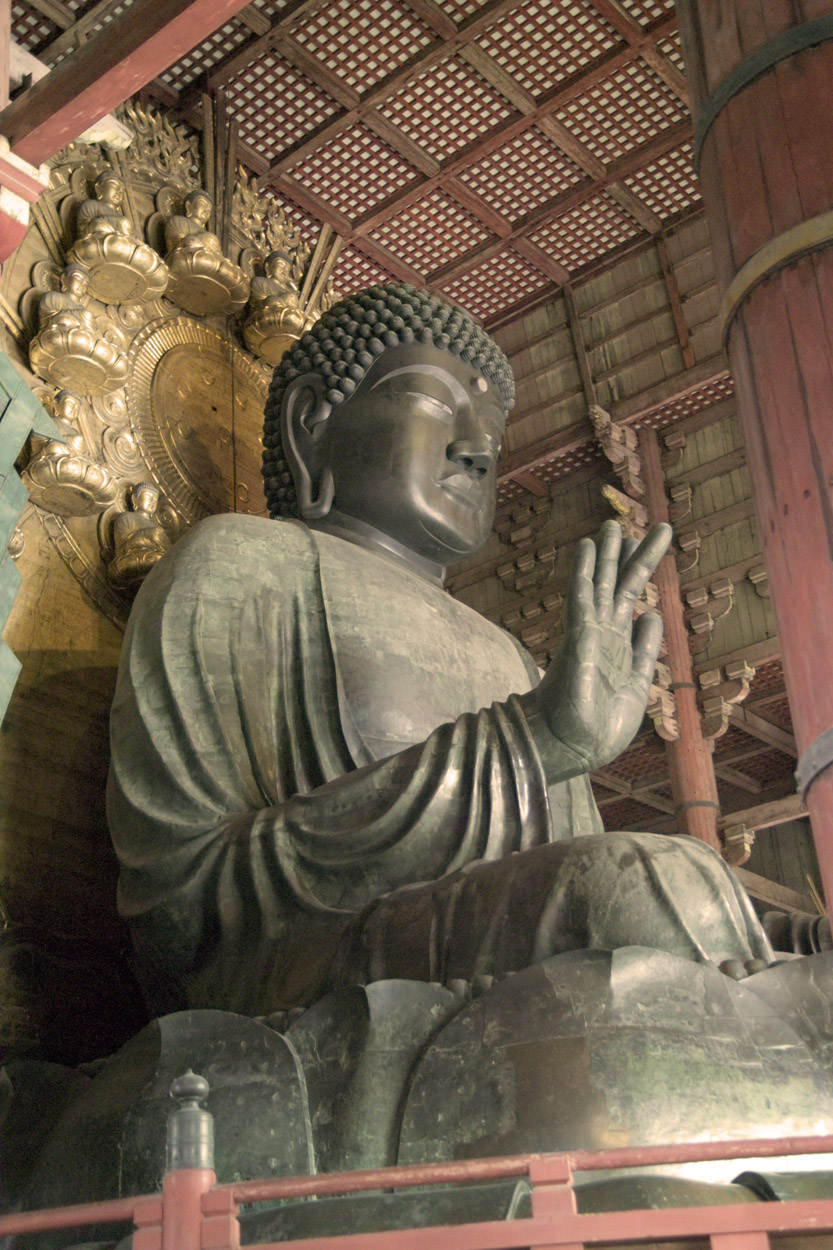|
761
__NOTOC__ Year 761 ( DCCLXI) was a common year starting on Thursday of the Julian calendar. The denomination 761 for this year has been used since the early medieval period, when the Anno Domini calendar era became the prevalent method in Europe for naming years. Events By place Britain * August 6 – Battle of Eildon: King Æthelwald Moll of Northumbria faces a rebellion, under a rival claimant to the throne named Oswine, brother of the murdered King Oswulf of Northumbria. Oswine is killed after a three-day battle against the forces of Æthelwald in Scotland. * Bridei V succeeds his brother Óengus I as king of the Picts (modern Scotland). Europe * The city of Oviedo (Northern Spain) is founded by the monks Nolan and John (approximate date). * Construction is completed on the 108-room Castello di Lunghezza outside of Rome, Italy. Abbasid Caliphate * An Abbasid Caliphate army reconquers the city of Kairouan (in modern-day Tunisia), from 'Abd al-Rahmān ibn ... [...More Info...] [...Related Items...] OR: [Wikipedia] [Google] [Baidu] |
Óengus I
Óengus son of Fergus (; ; died 761) was king of the Picts from 732 until his death in 761. His reign can be reconstructed in some detail from a variety of sources. The unprecedented territorial gains he made from coast to coast, and the legacy he left, mean Óengus can be considered the first king of what would become Scotland. Wresting power from his rivals, Óengus became the chief king in Pictland following a period of civil war in the late 720s. The most powerful ruler in Scotland for more than two decades, kings from Óengus's family dominated Pictland for a century, until defeat at the hands of Vikings in 839 began a new period of instability, ending with the coming to power of another Pictish dynasty, that of Kenneth MacAlpin, Cináed mac Ailpín. Sources and background Surviving Pictish sources for the period are few, limited to king lists, the original of which was prepared in the early 720s, and a number of accounts relating to the foundation of St Andrews, the ... [...More Info...] [...Related Items...] OR: [Wikipedia] [Google] [Baidu] |
Khurshid Of Tabaristan
Khurshid (Book Pahlavi: hwlšyt'; Tabari/, Spāhbed Khōrshīd 'General Khorshid'; 734–761), erroneously designated Khurshid II by earlier scholars, was the last Dabuyid '' ispahbadh'' of Tabaristan. He succeeded to the throne at an early age, and was supervised by his uncle as regent until he reached the age of fourteen. Khurshid supported various rebellions and maintained diplomatic contacts with Tang China. Finally, the Abbasids conquered his country in 759–760, and captured most members of his family. Khurshid fled to Daylam, where he ended his life. Biography Khurshid was born in 734/735, the son of Dadhburzmihr or Dadmihr (died 740) and grandson of Farrukhan the Great (died ca. 728), the first ruler ('' ispahbadh'') of the Dabuyid dynasty from whose reign coins are known.Rekaya (1986), pp. 68–70Madelung (1993), pp. 541–544 According to the traditional account, the Dabuyids had established themselves as the autonomous rulers of Tabaristan in the 640s, during t ... [...More Info...] [...Related Items...] OR: [Wikipedia] [Google] [Baidu] |
Bridei V
Bridei V (Goidelic languages, Gaelic: ''Bruide mac Fergusa'') was king of the Picts from 761 until 763. He was the brother of Óengus I, Óengus, whom he succeeded as king. His death is recorded by the ''Annals of Ulster'' and the ''Annals of Tigernach''. See also * House of Óengus References 763 deaths Pictish monarchs 8th-century Scottish monarchs Year of birth unknown {{Scotland-royal-stub ... [...More Info...] [...Related Items...] OR: [Wikipedia] [Google] [Baidu] |
Rustamid Dynasty
The Rustamid dynasty () (or ''Rustumids'', ''Rostemids'') was an Ibadi dynasty of Persian origin which ruled a state that was centered in present-day Algeria. The dynasty governed as a Muslim theocracy for a century and a half from its capital Tahert (present day Tagdemt) until the Ismaili Fatimid Caliphate defeated it. Rustamid authority extended over what is now central and western Algeria, parts of southern Tunisia, and the Jebel Nafusa and Fezzan regions in Libya as far as Zawila. History The Ibāḍī movement reached North Africa by 719, when the missionary Salma ibn Sa'd was sent from the Ibādī ''jama'a'' of Basra to Kairouan. By 740, their efforts had converted the major Berber tribes of Huwara around Tripoli, in the Nafusa Mountains and at Zenata in western Tripolitania. In 757 (140 AH), a group of four Basra-educated missionaries including ʻAbd ar-Rahmān ibn Rustam proclaimed an Ibāḍī imamate in Tripolitania, starting an abortive state led by Abu l ... [...More Info...] [...Related Items...] OR: [Wikipedia] [Google] [Baidu] |
Spahbed
''Spāhbad'' (also spelled ''spahbod'') is a Middle Persian title meaning "army chief" used chiefly in the Sasanian Empire. Originally there was a single ''spāhbad'', called the , who functioned as the generalissimo of the Military of the Sasanian Empire, Sasanian army. From the time of Khosrow I ( 531–579) on, the office was split in four, with a ''spāhbad'' for each of the cardinal directions.Gyselen (2004) After the Muslim conquest of Persia, the ''spāhbed'' of the East managed to retain his authority over the inaccessible mountainous region of Tabaristan on the southern shore of the Caspian Sea, where the title, often in its Islamic form (; in ), survived as a regnal title until the Mongol conquests of the 13th century.Bosworth (1978), pp. 207–208 An equivalent title of Persian origin, ''ispahsalar, ispahsālār or sipahsālār'', gained great currency across the Muslim world in the 10th–15th centuries. The title was also adopted by the Armenians (, ) and the Georgi ... [...More Info...] [...Related Items...] OR: [Wikipedia] [Google] [Baidu] |
Castello Di Lunghezza
The Castello di Lunghezza ("Lunghezza Castle") is a medieval fortification situated roughly east of Rome, Italy. It lies in Municipio VIII of Rome, and sits on the site of the ancient town of Collatia. History It was constructed in the year 761 AD and was ruled over by the Poli Family for several generations. In the 13th century, the Polis fell out of favor with Pope Boniface VIII when they gave all the lands around the castle to a local monastery. After some dispute, the papacy gained control of the land and it was bestowed upon the Orsinis, a family of Roman nobles. Throughout the early 20th century, it changed hands in various English families a number of times. In the 1950s, the castle was purchased by British curator Malcolm Munthe Major Malcolm Grane Ludovic Martin Munthe MC (30 January 1910 – 24 November 1995) was a British soldier, writer, and curator, and son of the Swedish doctor and writer Axel Munthe and his English second wife Hilda Pennington-Mellor. Ea ... [...More Info...] [...Related Items...] OR: [Wikipedia] [Google] [Baidu] |
Picts
The Picts were a group of peoples in what is now Scotland north of the Firth of Forth, in the Scotland in the early Middle Ages, Early Middle Ages. Where they lived and details of their culture can be gleaned from early medieval texts and Pictish stones. The name appears in written records as an Exonym and endonym, exonym from the late third century AD. They are assumed to have been descendants of the Caledonians, Caledonii and other northern British Iron Age, Iron Age tribes. Their territory is referred to as "Pictland" by modern historians. Initially made up of several chiefdoms, it came to be dominated by the Pictish kingdom of Fortriu from the seventh century. During this Fortriu#Verturian_hegemony, Verturian hegemony, ''Picti'' was adopted as an endonym. This lasted around 160 years until the Pictish kingdom merged with that of Dál Riata to form the Kingdom of Alba, ruled by the House of Alpin. The concept of "Pictish kingship" continued for a few decades until it was ab ... [...More Info...] [...Related Items...] OR: [Wikipedia] [Google] [Baidu] |
Tunisia
Tunisia, officially the Republic of Tunisia, is a country in the Maghreb region of North Africa. It is bordered by Algeria to the west and southwest, Libya to the southeast, and the Mediterranean Sea to the north and east. Tunisia also shares maritime borders with Italy through the islands of Sicily and Sardinia to the north and Malta to the east. It features the archaeological sites of Carthage dating back to the 9th century BC, as well as the Great Mosque of Kairouan. Known for its ancient architecture, Souks of Tunis, souks, and blue coasts, it covers , and has a population of 12.1 million. It contains the eastern end of the Atlas Mountains and the northern reaches of the Sahara desert; much of its remaining territory is arable land. Its of coastline includes the African conjunction of the western and eastern parts of the Mediterranean Basin. Tunisia is home to Africa's northernmost point, Cape Angela. Located on the northeastern coast, Tunis is the capital and List of cities ... [...More Info...] [...Related Items...] OR: [Wikipedia] [Google] [Baidu] |
Æthelwald Moll Of Northumbria
Æthelwald Moll was King of Northumbria, the historic petty kingdom of Angles in medieval England, from 759 to 765. He seized power after the murder of Oswulf son of Eadberht; his ancestry and connection to the royal family of Northumbria is unknown. Æthelwald faced at least one rebellion, led by Oswine, perhaps a brother of Oswulf. In 765 a Witenagemot of Northumbrian notables deposed Æthelwald and replaced him with Alhred, a kinsman of his predecessor. After his removal from the throne Æthelwald became a monk, perhaps involuntarily. Æthelwald's marriage with one Æthelthryth is recorded in 762 at Catterick by Symeon of Durham. He is known to have had at least one son, Æthelred, who later became king. Origins Æthelwald is not recorded in the extant genealogies of Northumbrian kings, perhaps because he was not a descendant of Ida and the Bernician kings. Whether he was a descendant of the Deiran dynasty of Ælle, or simply a member of a powerful noble family, is un ... [...More Info...] [...Related Items...] OR: [Wikipedia] [Google] [Baidu] |
Calendar Era
A calendar era is the period of time elapsed since one '' epoch'' of a calendar and, if it exists, before the next one. For example, the current year is numbered in the Gregorian calendar, which numbers its years in the Western Christian era (the Coptic Orthodox and Ethiopian Orthodox churches have their own Christian eras). In antiquity, regnal years were counted from the accession of a monarch. This makes the chronology of the ancient Near East very difficult to reconstruct, based on disparate and scattered king lists, such as the Sumerian King List and the Babylonian Canon of Kings. In East Asia, reckoning by era names chosen by ruling monarchs ceased in the 20th century except for Japan, where they are still used. Ancient dating systems Assyrian eponyms For over a thousand years, ancient Assyria used a system of eponyms to identify each year. Each year at the Akitu festival (celebrating the Mesopotamian new year), one of a small group of high officials (includ ... [...More Info...] [...Related Items...] OR: [Wikipedia] [Google] [Baidu] |
Empress Kōken
Empress Kōken (born Abe, known as Empress Shōtoku during her second reign; 718–770) was the 46th and 48th monarch of Japan according to the traditional order of succession. She was born to Crown Prince Obito (the future Emperor Shōmu) and his consort Fujiwara Asukabehime; seeking to protect the bloodline of Prince Kusakabe, her father proclaimed her the first crown princess in Japanese history in 738. She became the Empress Regnant in 749, after her father retired to become a Buddhist monk. With the backing of her mother (now Dowager Empress Kōmyō) and her mother's nephew Fujiwara no Nakamaro, she was able to outmaneuver a largely hostile (Council of State). Her father died in 756, and named a cousin unrelated to the Fujiwara as her heir; this outraged Fujiwara supporters, and Kōken replaced him with Prince Ōi, a close ally of her mother and Nakamaro. In 757, she headed off a conspiracy to overthrow her by Tachibana no Naramaro, and resigned the following year to s ... [...More Info...] [...Related Items...] OR: [Wikipedia] [Google] [Baidu] |
Prayer
File:Prayers-collage.png, 300px, alt=Collage of various religionists praying – Clickable Image, Collage of various religionists praying ''(Clickable image – use cursor to identify.)'' rect 0 0 1000 1000 Shinto festivalgoer praying in front of the Tagata fertility shrine rect 1000 0 2000 1000 Balinese Hindu bride praying during a traditional wedding ceremony rect 2000 0 3000 1000 Muslim pilgrim praying at the Masjid al-Haram rect 0 1000 1000 2000 Catholic Trappist monk praying before a crucifix rect 1000 1000 2000 2000 Ethiopian priest praying in Lalibela rect 2000 1000 3000 2000 Buddhists praying in Leh rect 0 2000 1000 3000 Sikh praying in Front of the Golden Temple in Amritsar rect 1000 2000 2000 3000 Members of the Mengjia Longshan Temple Association gather for a traditional Chinese prayer service rect 2000 2000 3000 3000 Jewish people praying at the Western Wall Prayer is an invocation or act that seeks to activate a rapport with an object of worship through d ... [...More Info...] [...Related Items...] OR: [Wikipedia] [Google] [Baidu] |





